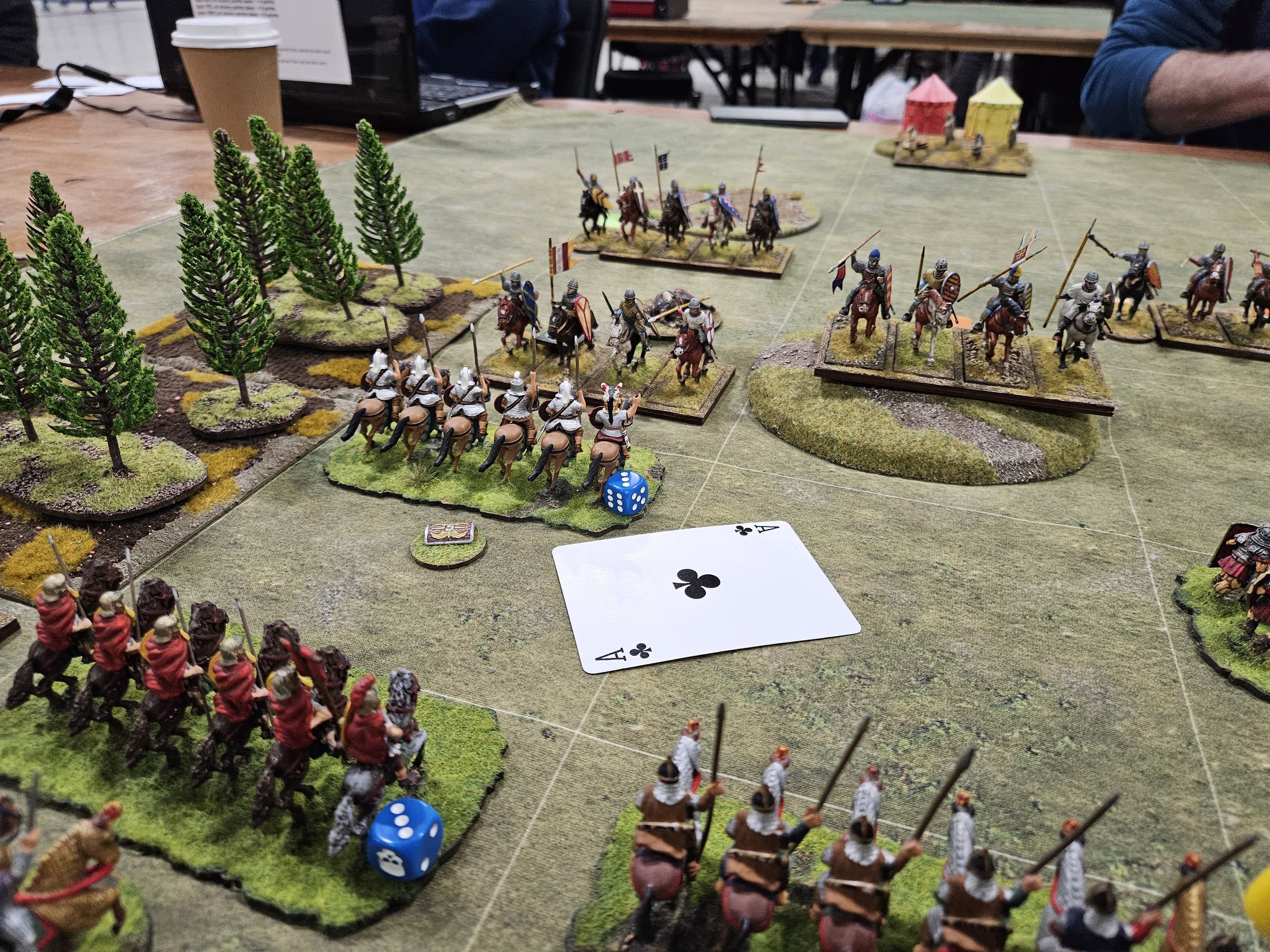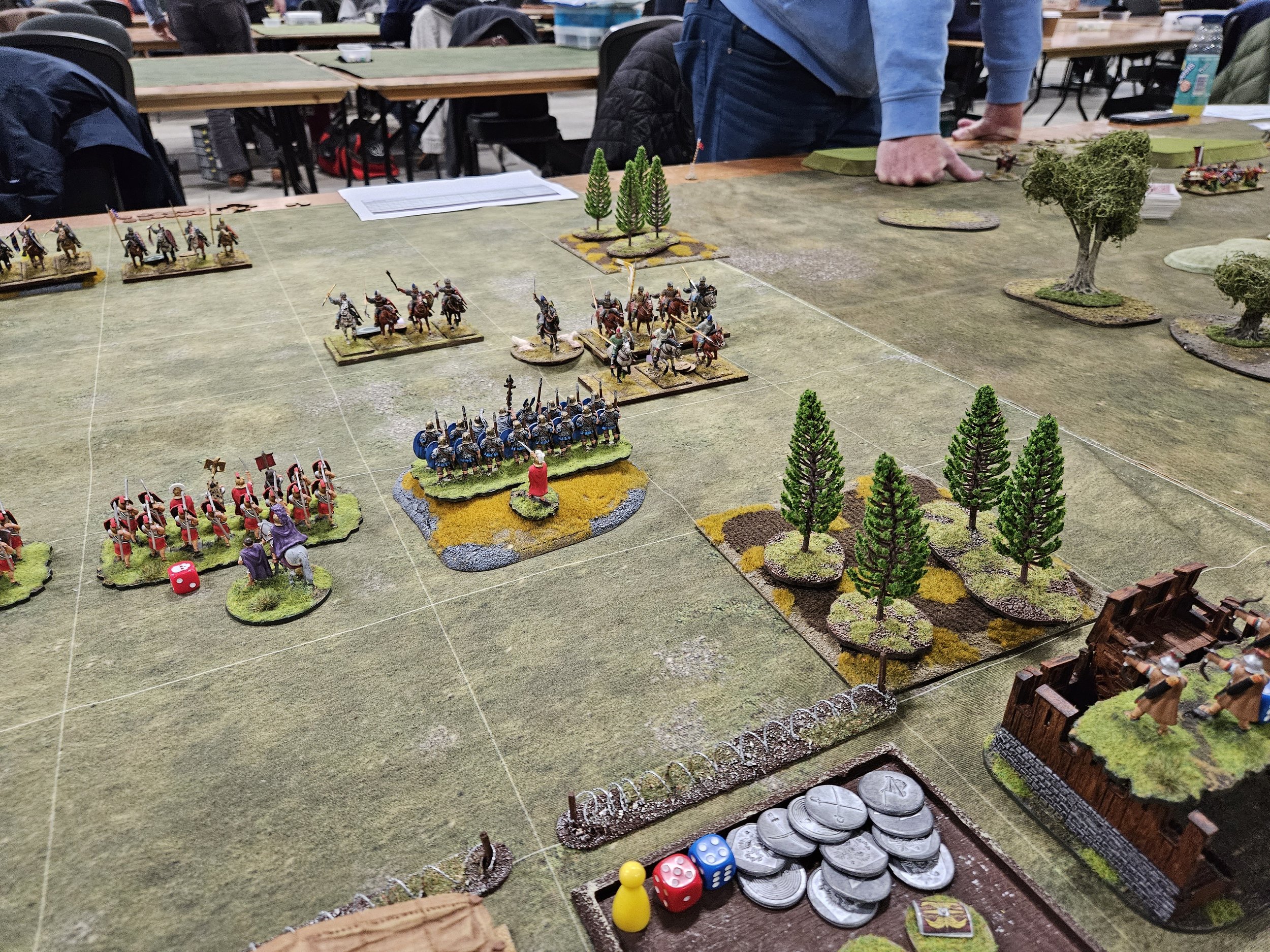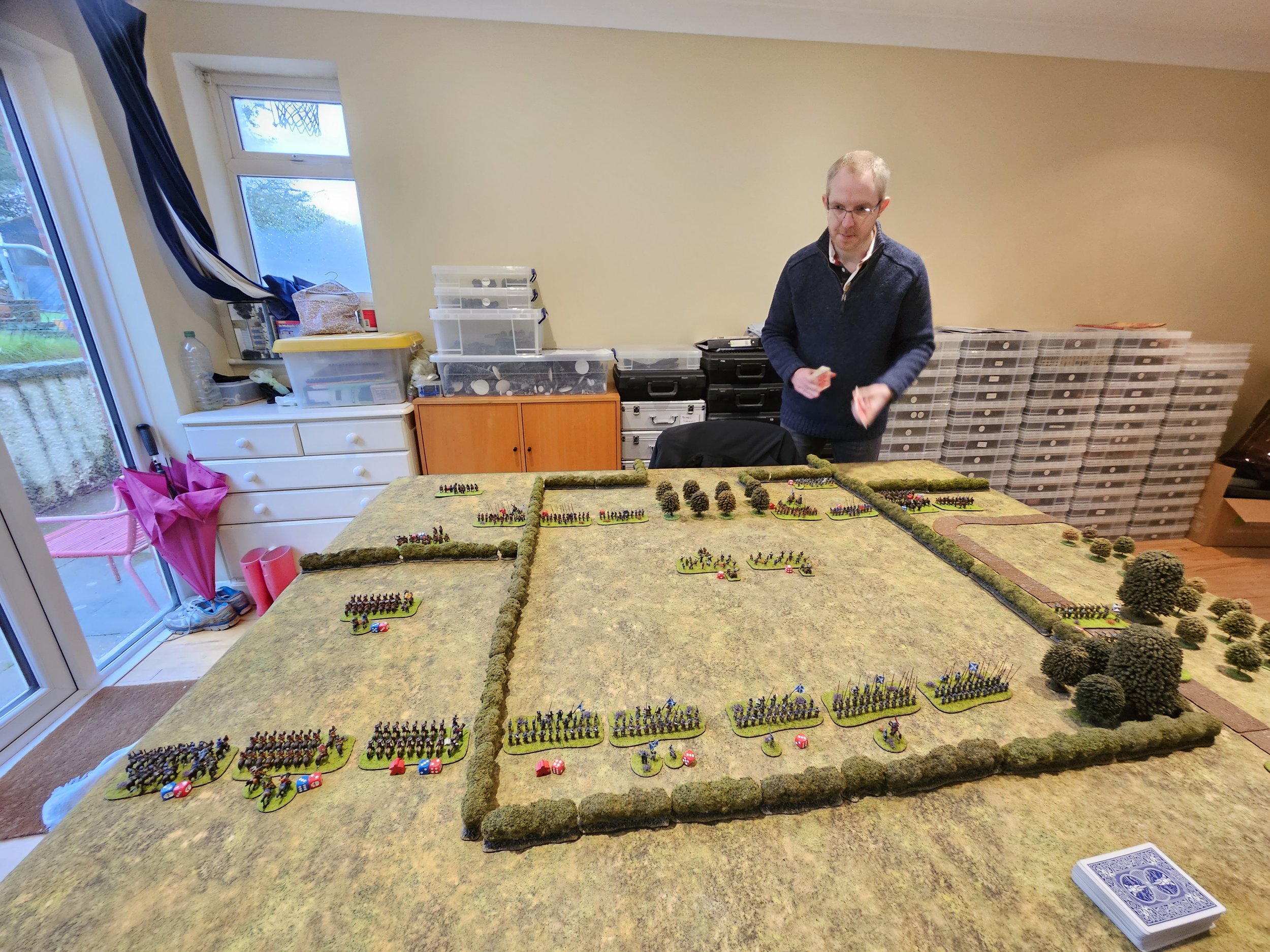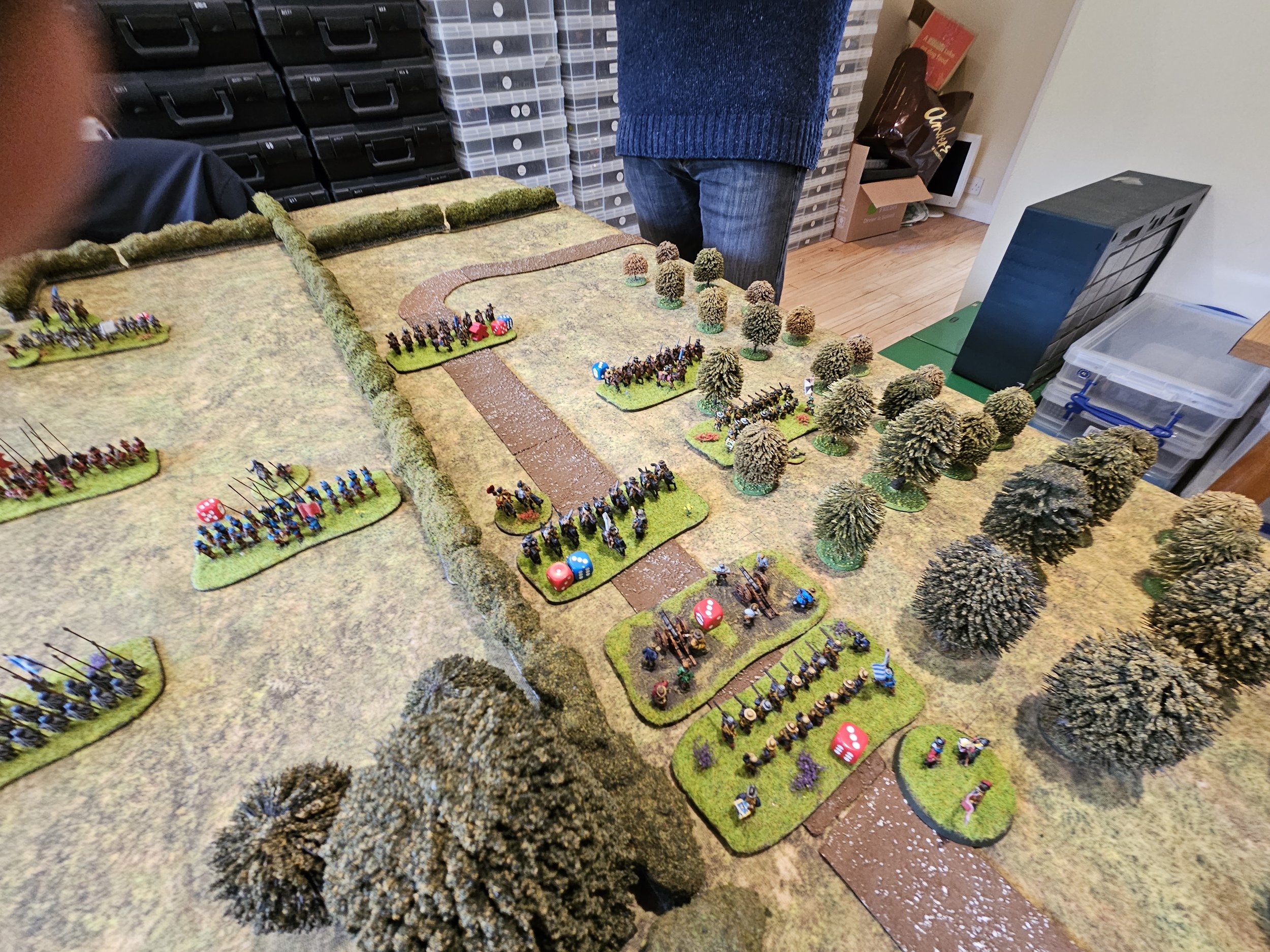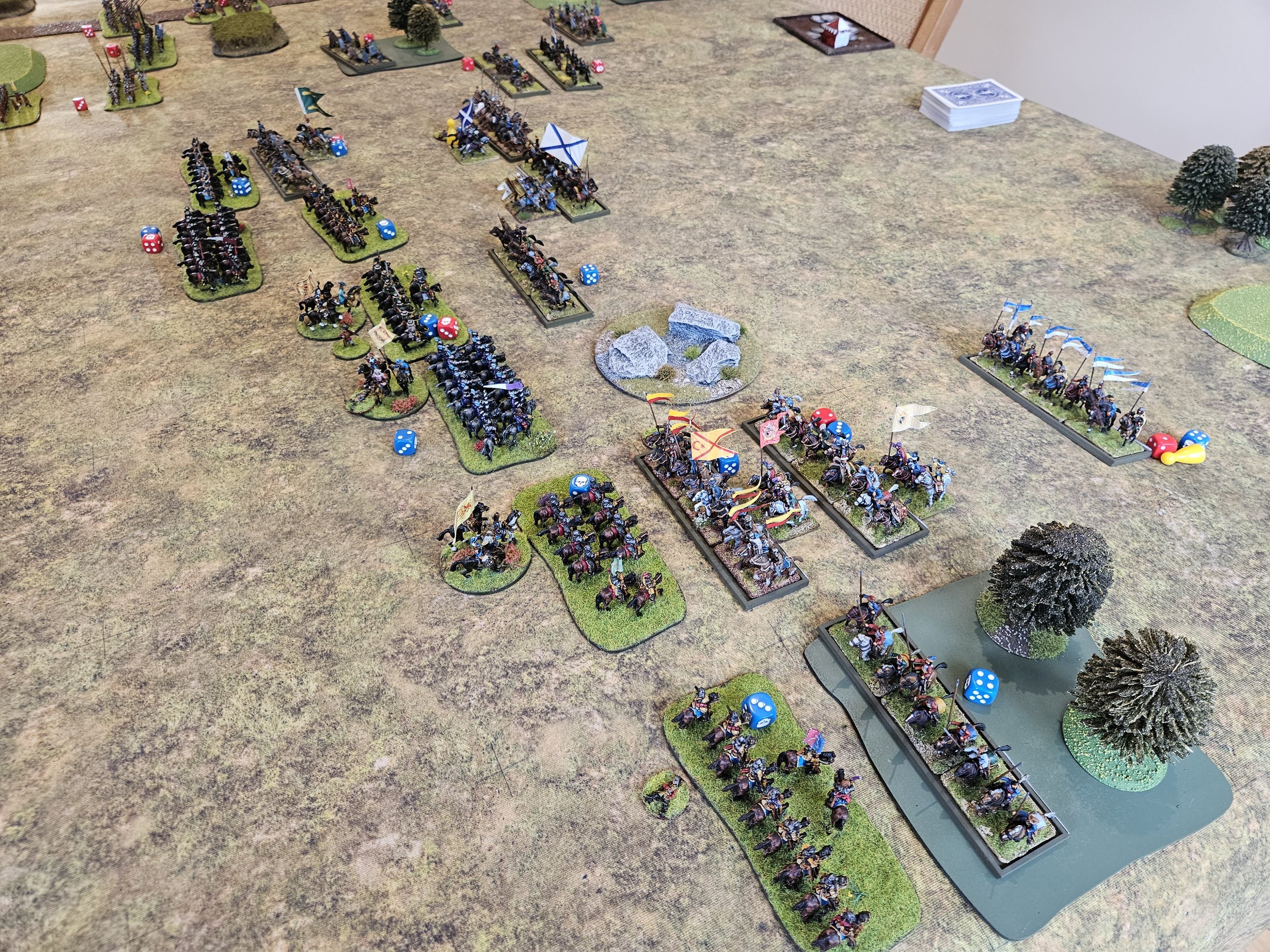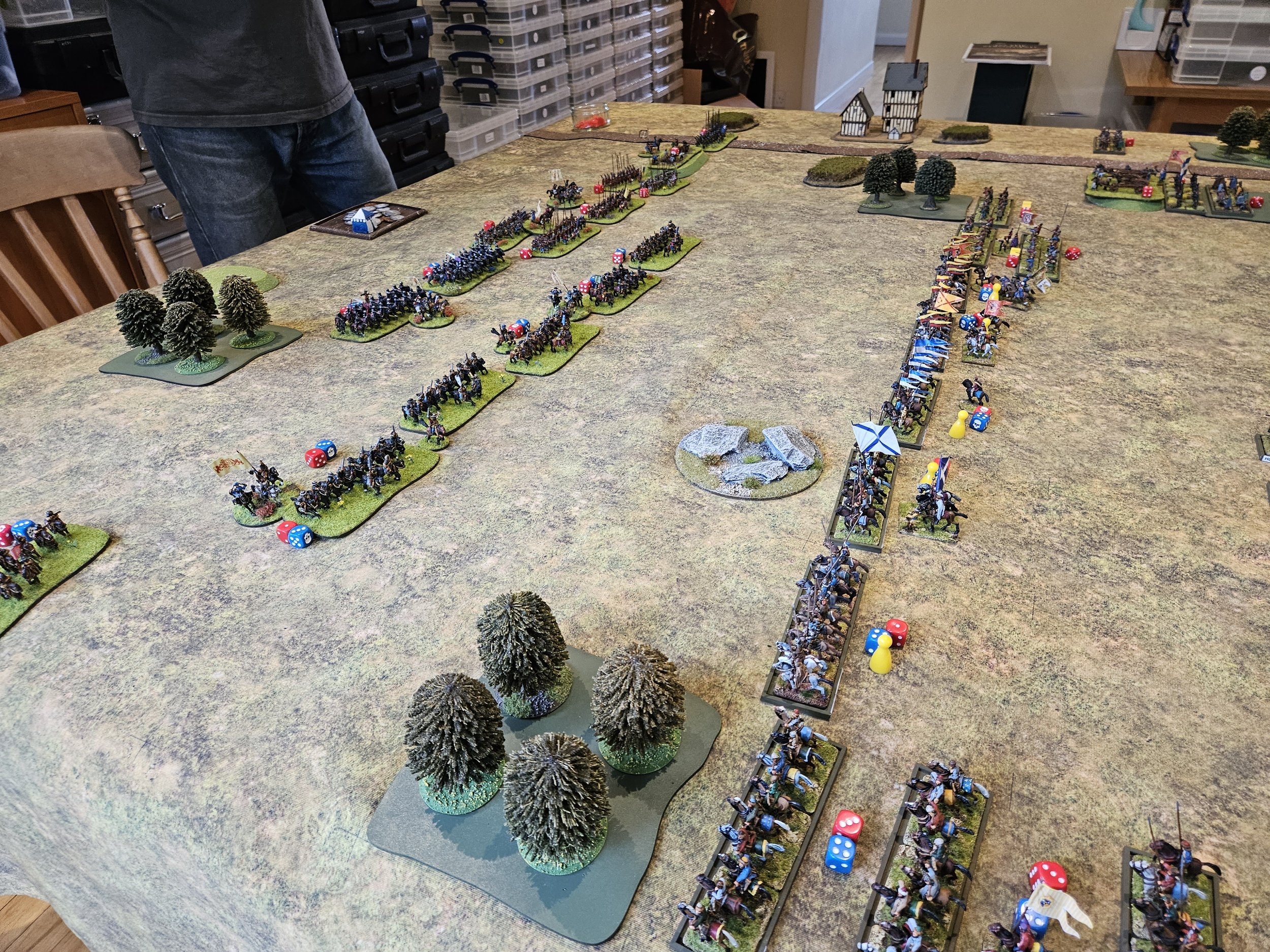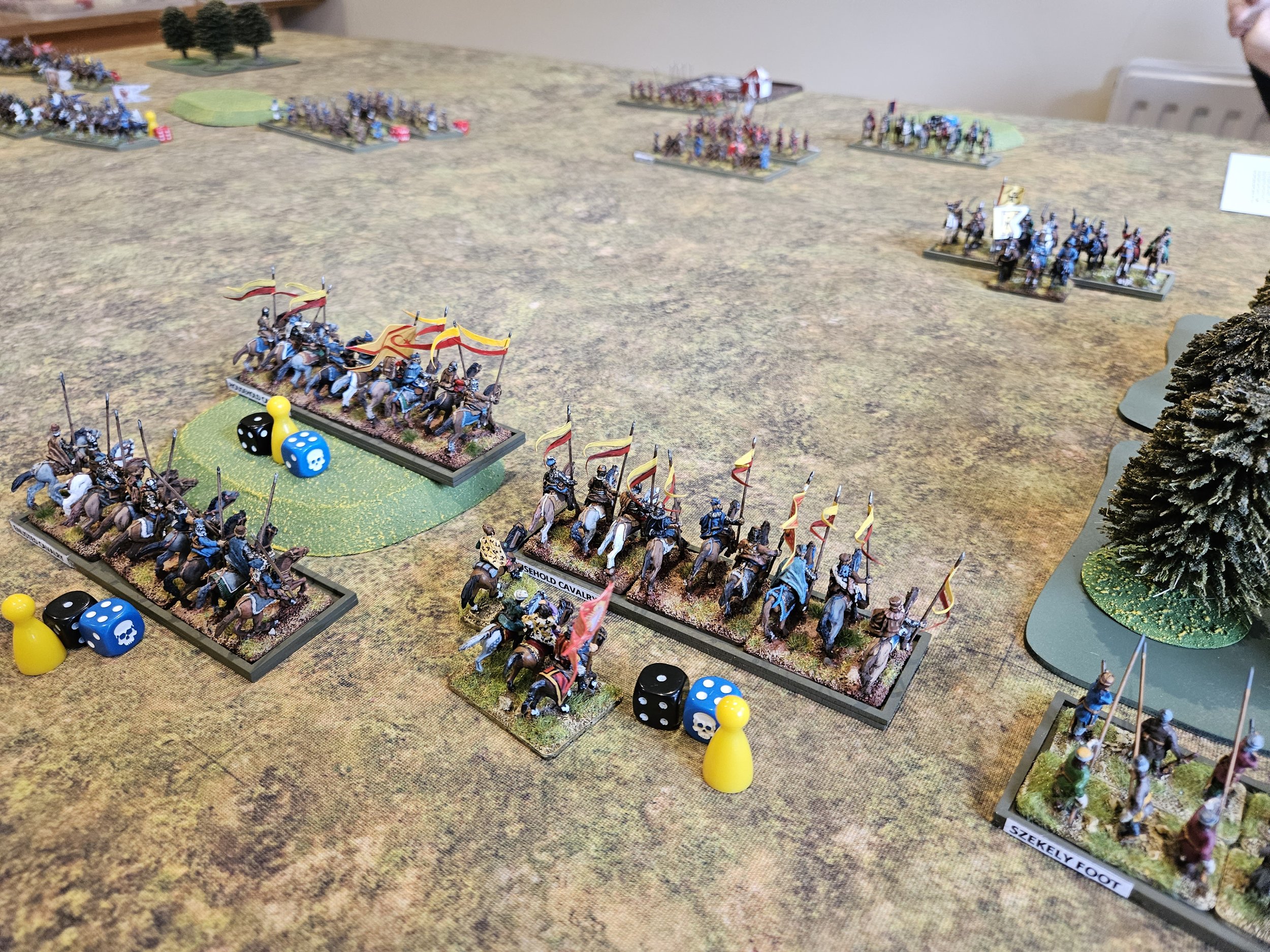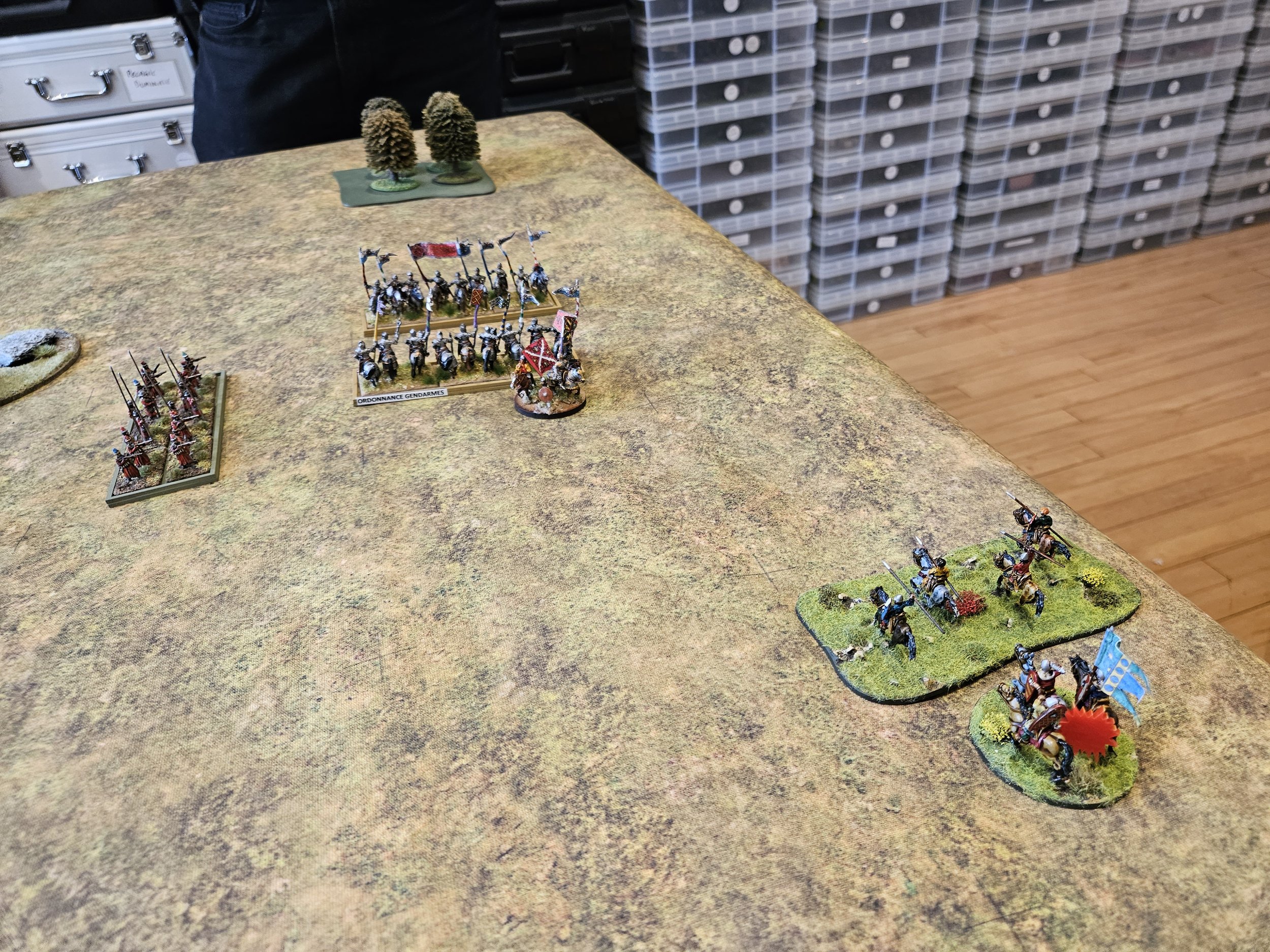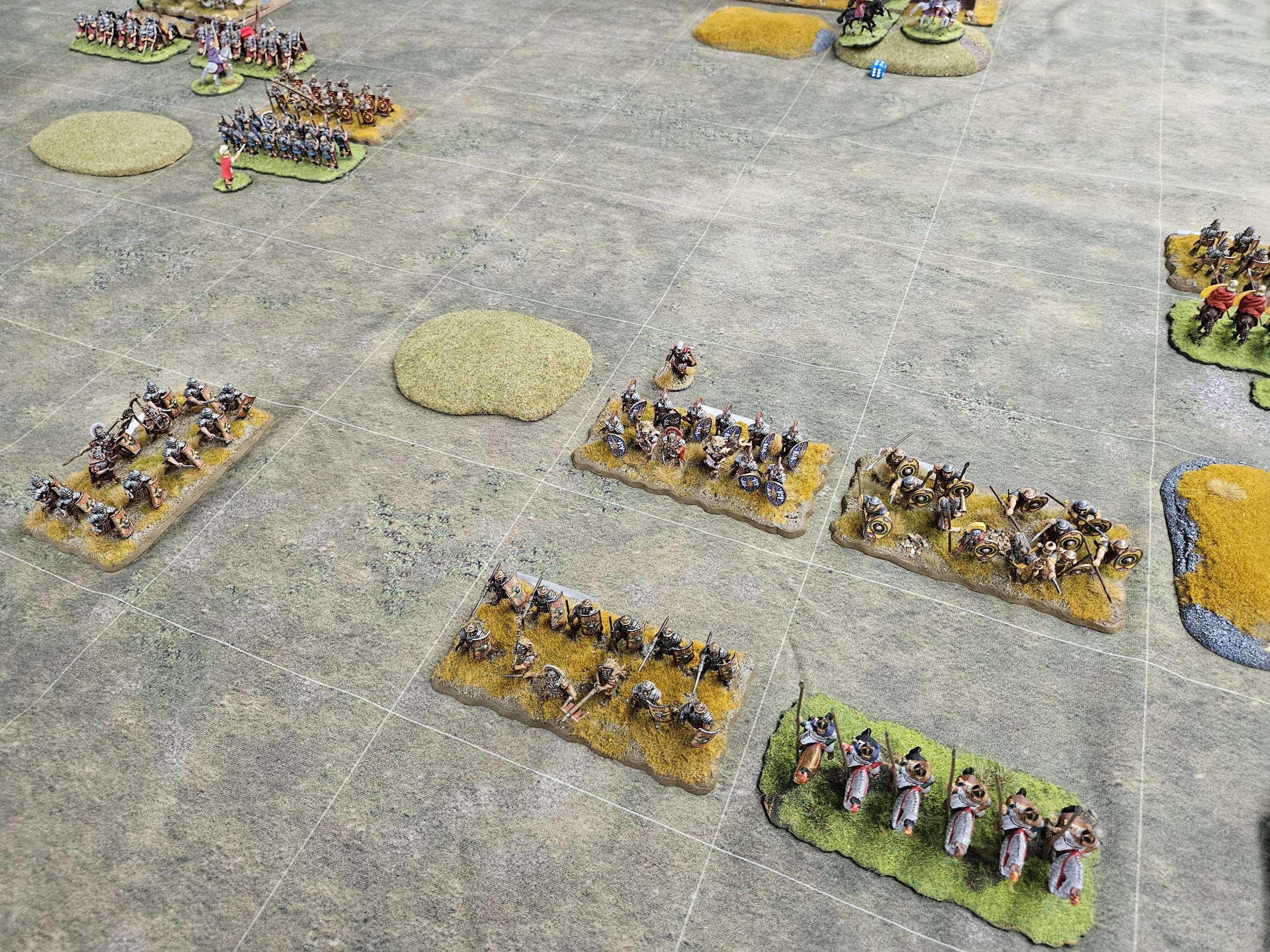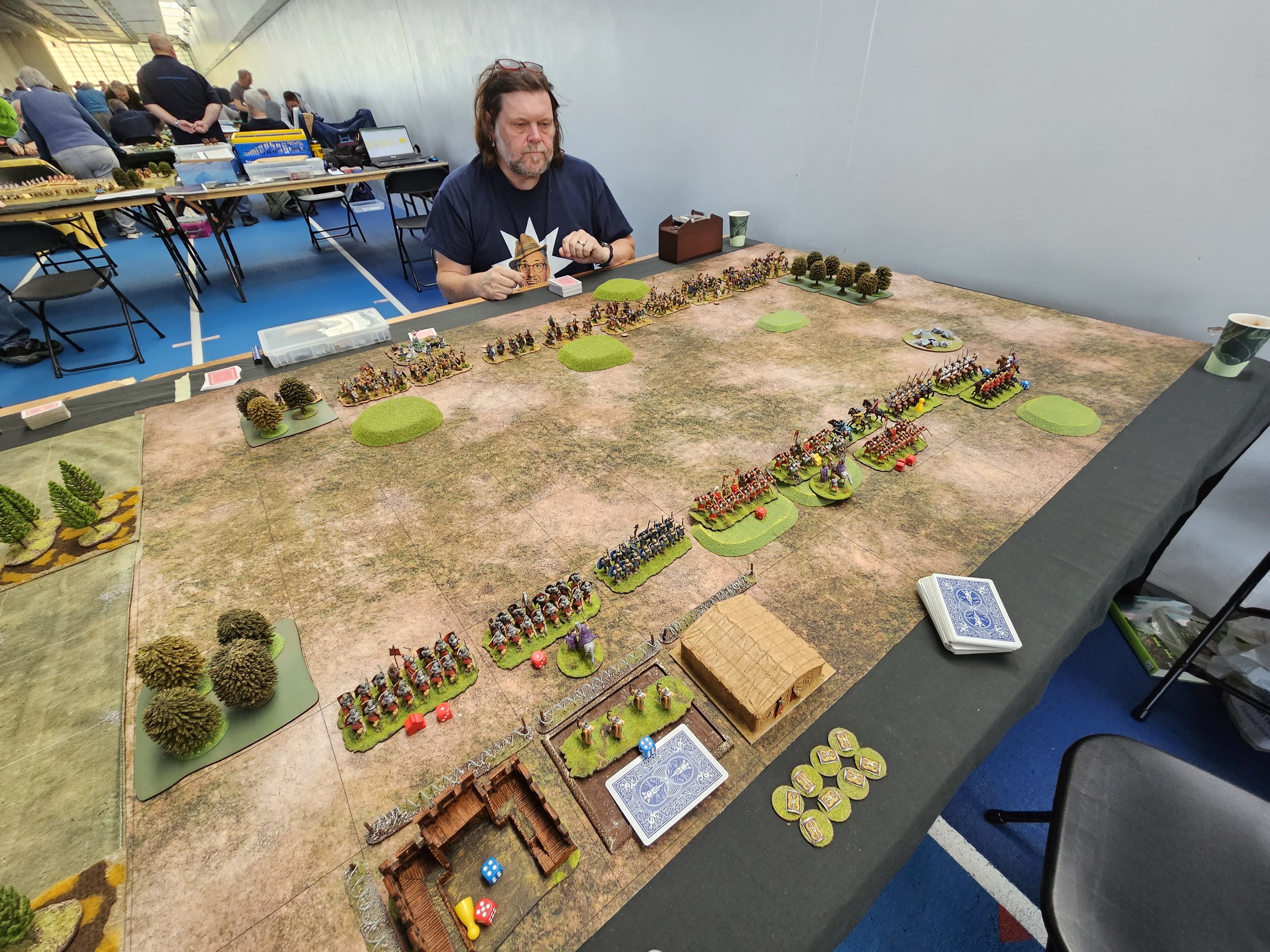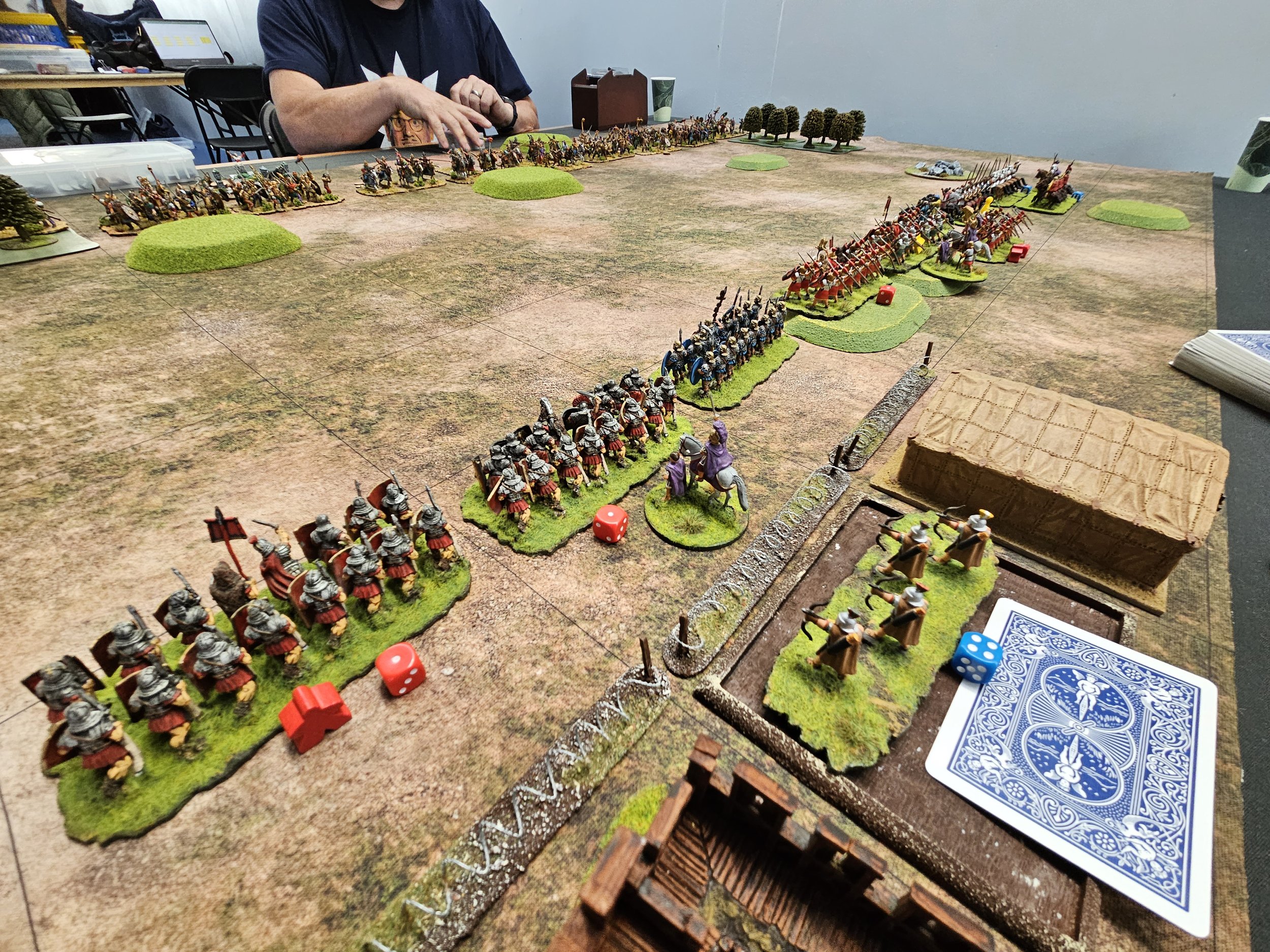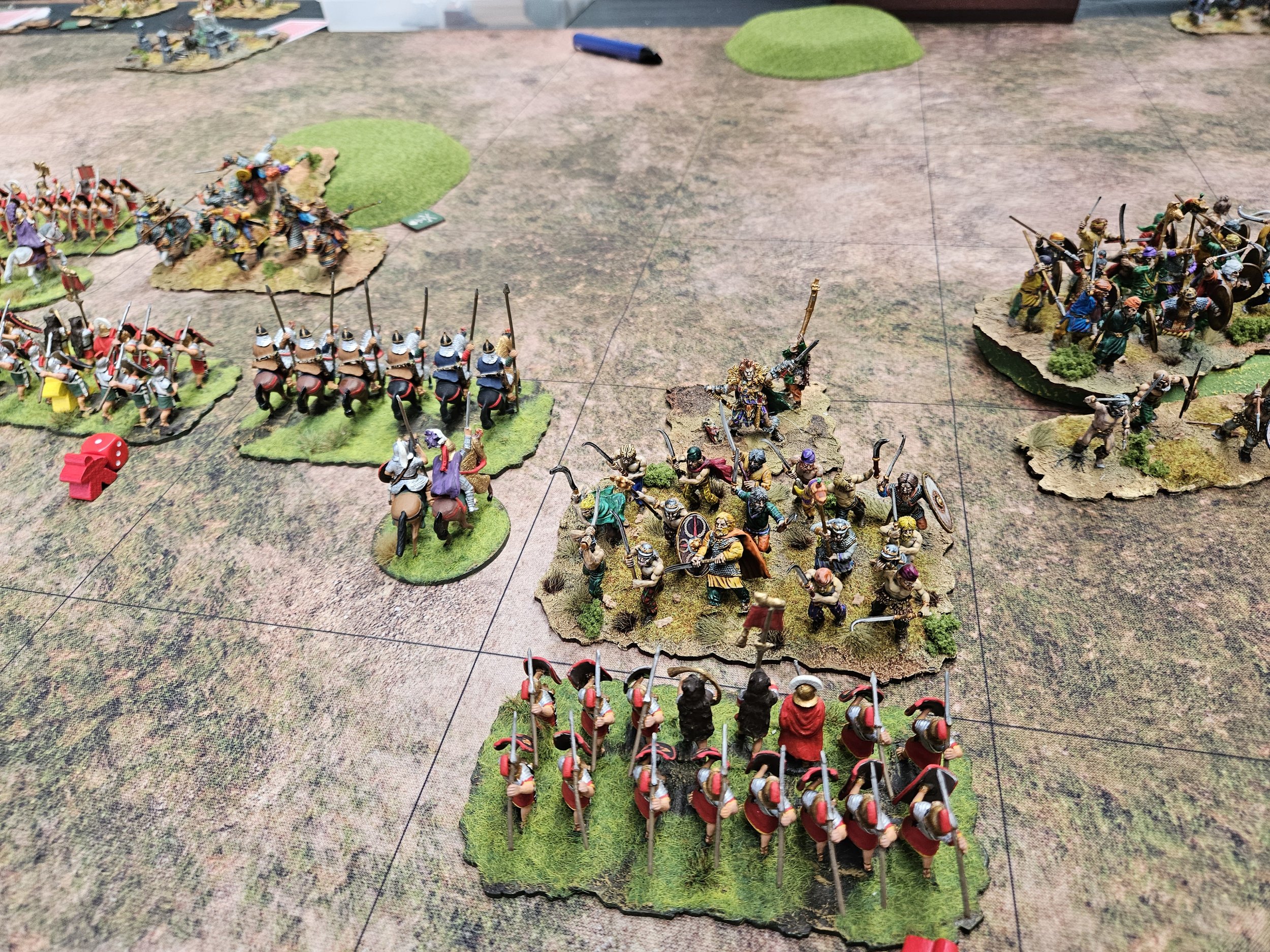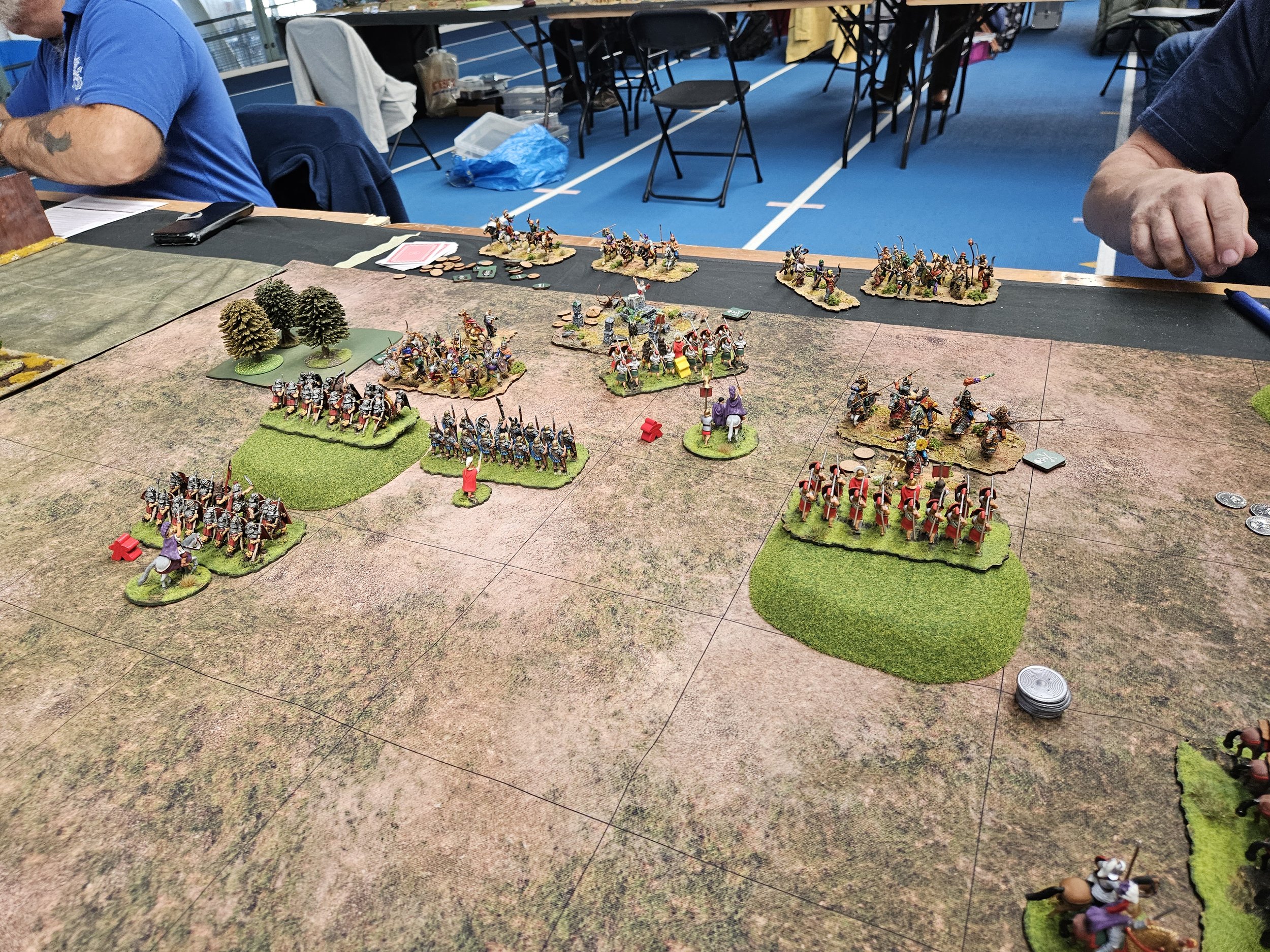TTS @ Warfare: Game One: EIR versus Eastern Franks
/One of the main reasons for me going to the Warfare show this year was that I was competing in the To The Strongest tournament there. Four games in one day, 135 points, my Early Imperial Romans ready for action.
I was expecting my first game to be against Andy’s Dacians-with-Sarmatian-allies, as I nearly always face Andy’s Dacians in round one of a tournament as they and the Romans are usually the closest together historically, but Andy wasn’t there so I would instead face Tim’s Eastern Franks. Talk about out of the frying pan and into the fire…just what my Romans hate: an all cavalry army.
The photo above shows the position just after the start of the battle: you can see Tim is looking to sneak around my flanks. I’m not too worried, at this stage, about my right flank (my legionaries can oblique right) but I do need to pull my cavalry back on the left to protect against the enemy horse on the other side of the wood advancing forward and getting behind my line.
This should have been a fairly easy move to make, but unfortunately Fortuna obviously had it in for me that day and both my cavalry brigade and the left hand legionary brigade froze in place, presumably bamboozled by the fact that there were no Dacians to be seen!
Although not a good situation, all was not lost: all I needed to do was to turn my cavalry to face the outflankers and get the legionaries into action.
Aaargh!
Another turn where my troops would do nothing…unlike Tim’s Franks!
I was now down a cavalry unit, but managed to stabilise the far left by sheer good luck as my other unit of Equites Cohortales survived being hit in the flank, turned, and drove off their attackers. They then advanced forward themselves to threaten Tim’s camp.
The left-centre, however, was a mess. Tim had brilliantly taken advantage of my stagnation by concentrating his heavy horse: knocking out two of my legionary units there and effectively bursting through my line.
With me threatening his camp, and him threatening to surround and wipe out the rest of my cavalry, it looked as if we’d end up about honours even overall, so the game would be decided on the right.
Here things had not gone badly, just not well. I’d lost the Auxilia to another nicely executed outflanking manoeuvre, but killed one of Tim’s generals in return.
All this to-ing and fro-ing had, however, drained the clock and we were now out of time. Totting up the points, a winning draw to Tim 8-5.
Here’s the position at the end of the battle:
So a tight first game with a disappointing result. Excellent play from Tim: using his superior mobility on the flanks and then taking full advantage of the opportunity in the left centre.
Three games still to go: so plenty of time to rescue the situation!


